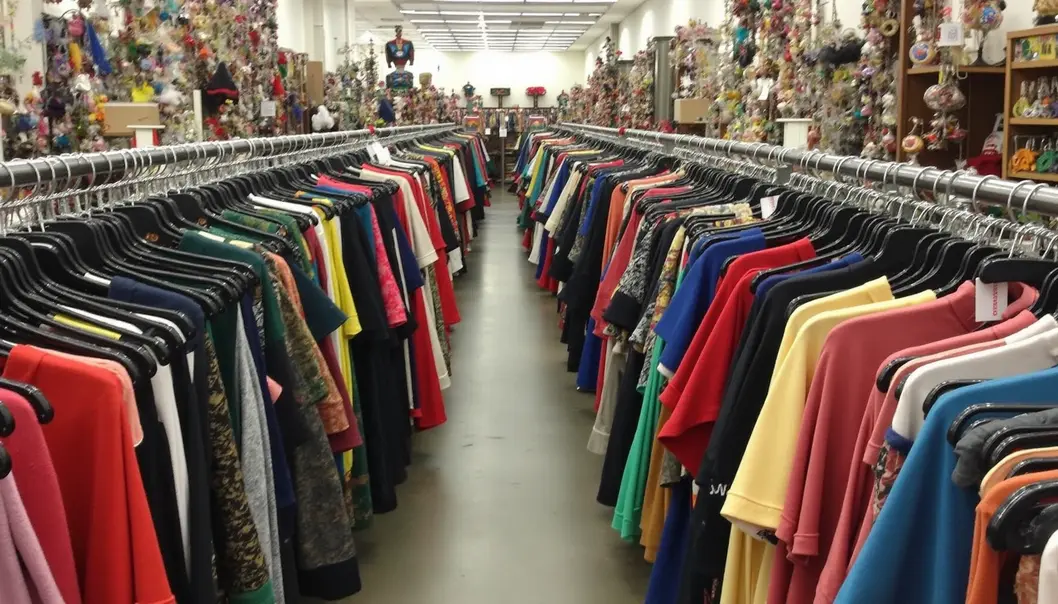Thrift shopping has become an art form—especially for freelancers seeking budget-friendly options while aiming for unique style. In a world where sustainability is paramount, secondhand shopping not only saves money but also reduces waste. Understanding the nuances of thrift shopping can help even the most seasoned thrift enthusiasts uncover hidden treasures. From knowing where to find quality items to steering clear of potential pitfalls, every tip has its merit. In essence, this guide serves as a roadmap: directing freelancers towards those often-overlooked peaks of thrift shopping. With insights ranging from spotting quality brands to leveraging online marketplaces, each strategy equips you to navigate your next thrift excursion effortlessly. Let’s dive into the world of thrift shopping, where every item has a story waiting to be discovered.
Treasure Hunting: Mastering the Art of Thrift Shopping for Quality Finds
Thrift shopping is not just a means to save money; it’s an adventure that opens up a world of unique items waiting to be discovered. From vintage clothing to rare collectibles, every visit to a thrift store has the potential to yield hidden treasures. However, to truly excel at finding great deals, it’s essential to adopt a strategic approach, ensuring that your thrifting expeditions are both fruitful and enjoyable.
Before stepping into a thrift store, having a game plan can significantly enhance your experience. Create a list of specific items you wish to find—this could range from summer dresses to retro furniture. By establishing a clear goal, you’ll avoid feeling overwhelmed by the variety of goods available. Your list will serve as a compass to navigate the vast aisles, guiding you toward your desired finds while keeping impulse buys at bay.
Moreover, sticking to a budget is crucial. It’s easy to get swept up in the excitement of thrifting and end up overspending. Set a realistic spending limit and adhere to it. This commitment not only protects your wallet but also encourages mindfulness in your shopping choices. With this groundwork laid, you’re ready to explore.
Timing can also play a pivotal role in your thrift shopping successes. One effective strategy is to shop off-season. For instance, hunting for winter coats or warm clothing during the summer months often results in significant discounts. Seasonal items are typically understocked at that time, allowing you to sift through fewer options and find excellent deals with more ease. This thoughtfulness leads to better treasures at a fraction of their original price.
The thrill of the hunt doesn’t just stem from the adrenaline of finding rare items; it also comes from the methodical search process. Inspecting every aisle and item thoroughly is key. Look beyond the main racks—check every side nook and corner, as well as the sales racks where marked-down items reside. Often, well-known brands or high-quality materials will stand out if you remain vigilant. Remember to prioritize clothes made from durable fabrics like 100% cotton, as these items often provide the best value for your money.
While you’re on this treasure hunt, consider casting a wide net. Don’t confine your search to typical gendered sections; instead, explore all areas of the store. For instance, women might find perfectly fitting jeans in the men’s department, or children’s clothing can sometimes reveal adorable vintage finds that appeal to adults. This broad approach not only enhances your chances of finding something unique but also makes for a more interesting shopping experience.
Creativity in your approach can yield surprisingly rewarding results in thrift shopping. As you scout for clothing, start with more easily identifiable items like shoes or jewelry before delving into the complexities of clothing styles or vintage apparel. These straightforward categories often have less competition and allow for quicker decisions, keeping frustration at bay.
Furthermore, consider the element of tailoring. Larger-sized garments are typically easier to alter, which means if you stumble upon something that you love but is just a bit off in size, acquiring it could be worthwhile. Embrace the idea that minor adjustments can transform a piece into one that fits you perfectly, giving it a new lease on life.
Another layer of strategy involves distinguishing between common goods and unique items. Thrift stores sometimes confuse value by pricing commonplace items too high. By shifting your focus to vintage pieces or items that stand out due to their quirky appeal, you’ll find exceptional values that resonate more with the essence of thrifting. Unique finds not only add character to your wardrobe or home but also often hold a better resale value.
While physical thrift stores are a fantastic place to unearth gems, don’t overlook the advantages of online secondhand marketplaces. Websites like eBay and Etsy allow you to curate your searches, monitoring tempting designer pieces that may be listed at a fraction of their retail cost. However, when using these platforms, exercise caution. Make sure to vet sellers thoroughly, as there can be pitfalls like drop-shipped products that do not meet expectations.
The act of thrifting is not only about saving money but also about contributing to sustainability. By choosing secondhand goods over new items, you’re effectively reducing waste and extending the life cycle of perfectly good products. As a shopper, you can find joy in knowing you’re making a responsible choice while discovering items that carry stories and history.
In summary, the art of thrifting encompasses much more than simply rummaging through racks and hoping for the best. By adopting a strategic approach—perhaps involving preparation, off-season shopping, thorough inspection of items, maintaining an open mind about sizing and sections, and embracing online resources—you’ll hone your skills at uncovering quality, affordable, and unique finds with every excursion. Enjoy the thrill of the hunt, and may each thrift shopping experience lead you to your next remarkable discovery.
Final thoughts
In conclusion, thrifting not only offers a unique shopping experience but also serves as a sustainable practice. By focusing on quality brands and unique finds while navigating potential pitfalls, freelancers can save money and express their style. Embrace the journey of thrift shopping—every visit can yield exciting discoveries that reflect your individuality.
Join our newsletter to get the latest on frugal living!
Learn more: https://savemawallet.com
About us
Download our free guide to maximize your savings while living a sustainable life.


Leave a Reply
You must be logged in to post a comment.